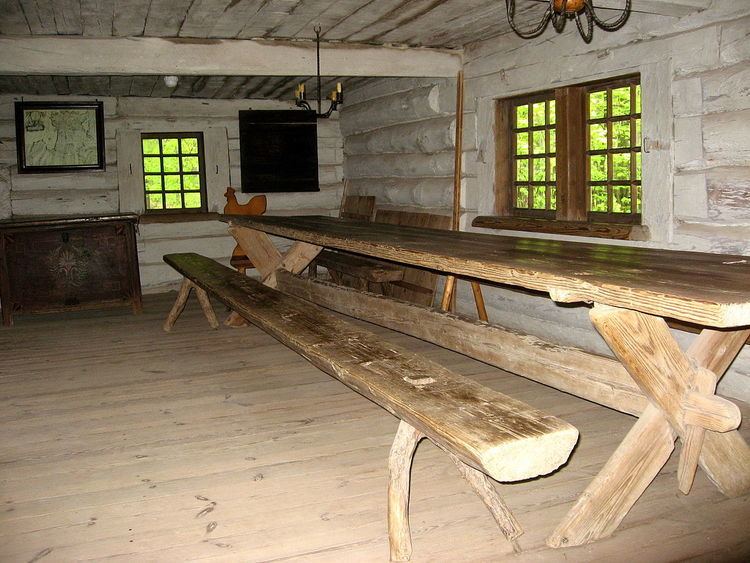 | ||
A trestle table is an item of furniture consisting of two or three trestle supports linked by a longitudinal cross-member over which a board or tabletop is placed. In the Middle Ages, the trestle table was often little more than loose boards over trestle legs for ease of assembly and storage. This simple, collapsible style remained the most common Western form of table until the 16th century, when the basic trestle design gave way to stronger frame-based structures such as gateleg and refectory tables. Ease of assembly and storage has made it the ideal occasional table, and it remains a popular form of dining table, as those seated are not so inconvenienced as they might be with the more usual arrangement of a fixed leg at each corner.
Contents
Construction and uses
Trestle tables figure prominently in the traditional Americana style of household furnishings, usually accompanied by spindle-backed chairs. The trestles in this case are normally of much higher quality, often made of oak and braced with a stretcher beam using a keyed tenon through the centre of each trestle. These typically support a high-quality waxed oak tabletop. Trestle tables are also used in the event furniture industry, they are the main table used at weddings and other types of venues today.
Heraldry
The trestle (also tressle, tressel and threstle) is (rarely) used as a charge in heraldry, and symbolically associated with hospitality (as historically the trestle was a tripod used both as a stool and to support tables at banquets).
Trivia
The decorator's trestle table is acknowledged as the basis of the pseudonym adopted by Robert Tressell, a decorator-turned-author, for his novel The Ragged Trousered Philanthropists, published in 1910.
